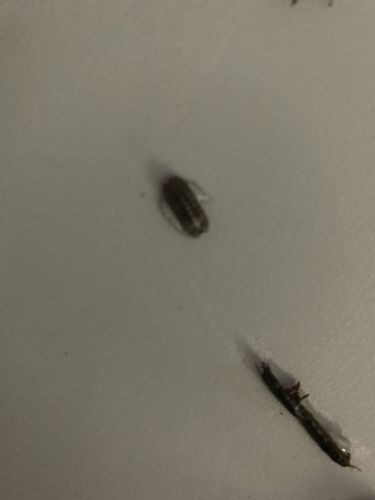Woodlouse (Pillbug/Sowbug)
Scientific Name: Various species in the order Isopoda, specifically suborder Oniscidea (e.g., Porcellionides pruinosus, Armadillidium vulgare)
Order & Family: Order: Isopoda, Suborder: Oniscidea
Size: Typically 6 to 20 mm (0.24 to 0.79 inches) in length.

Natural Habitat
Damp, dark places outdoors under rocks, logs, leaf litter, and potted plants. Indoors, they are found in basements, crawl spaces, and other moist areas.
Diet & Feeding
Detritivores, feeding primarily on decaying organic matter such as rotting wood, leaves, and fungi. They may occasionally nibble on young plants or fruits, especially if other food sources are scarce.
Behavior Patterns
Nocturnal and prefer moist environments to prevent desiccation. They are known for their 'rolling into a ball' (conglobation) defense mechanism (pillbugs) or fleeing (sowbugs) when disturbed. They are not insects but terrestrial crustaceans.
Risks & Benefits
Generally harmless to humans and pets, as they do not bite, sting, or transmit diseases. They are beneficial decomposers in ecosystems, breaking down organic matter and returning nutrients to the soil. In large numbers, they can sometimes damage seedlings or soft fruits in gardens.
Identified on: 9/17/2025